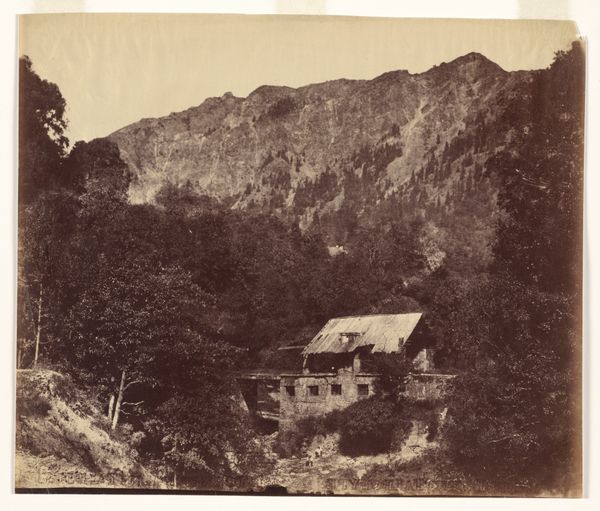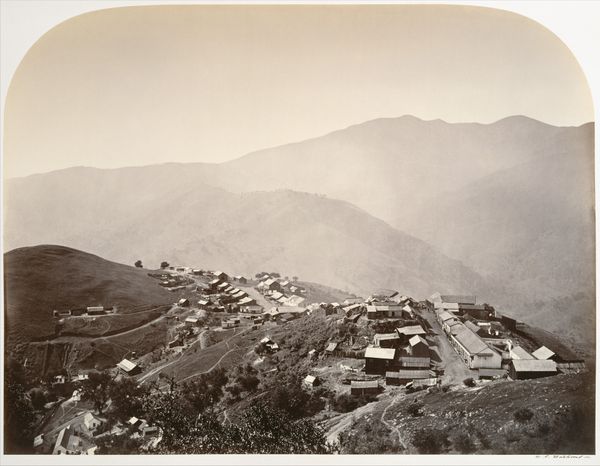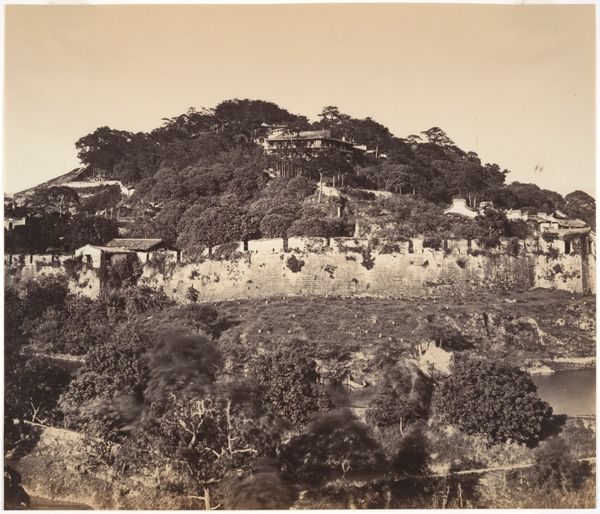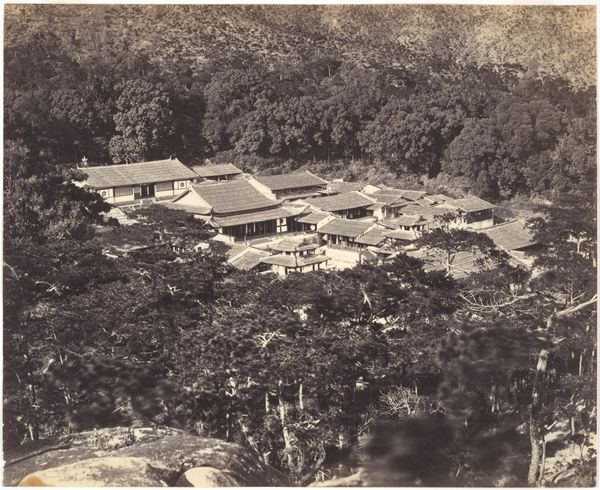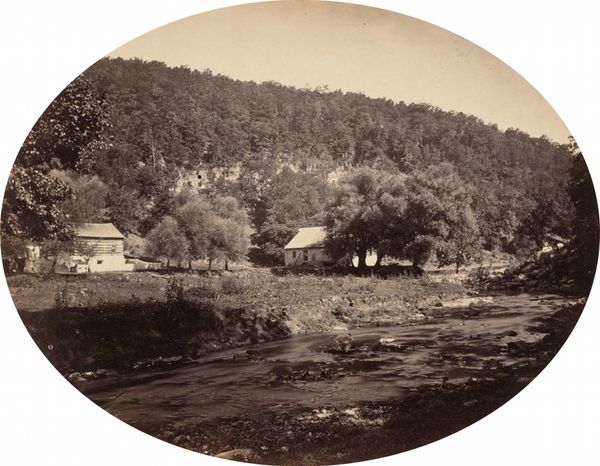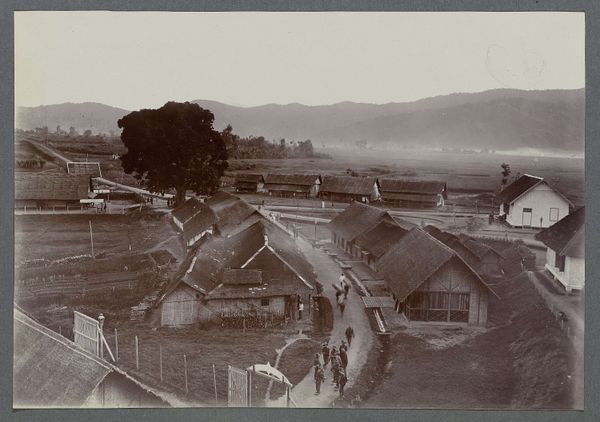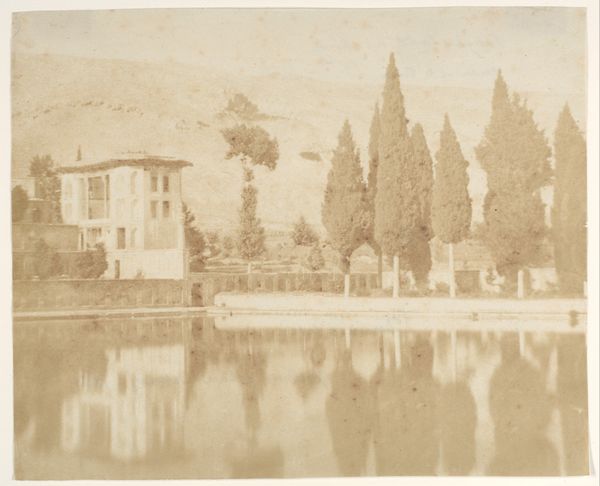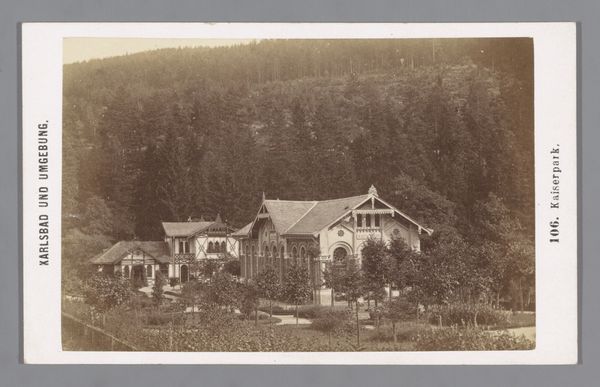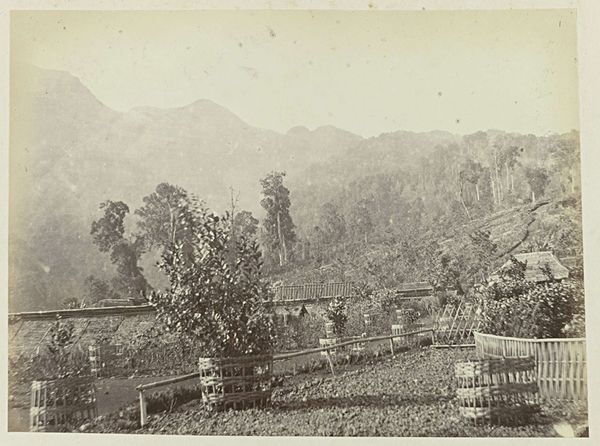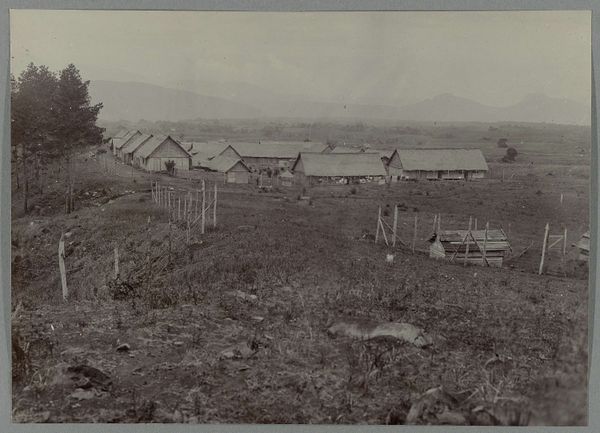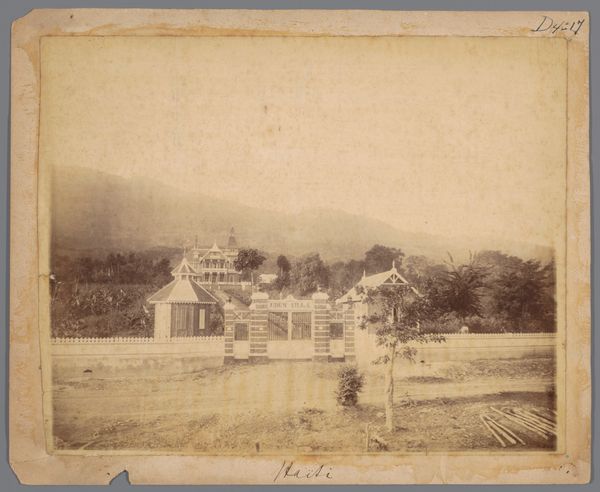
photography, collotype
#
tree
#
outdoor environmental image
#
landscape
#
house
#
outdoor photography
#
photography
#
collotype
#
mountain
#
orientalism
Dimensions: Image: 9 7/16 × 11 1/8 in. (23.9 × 28.3 cm)
Copyright: Public Domain
Editor: Here we have Tung Hing's "Teafield & Josshouse at Peling" from 1869, made with a collotype print. It's such a tranquil scene, almost idyllic. What's striking to me is how the architecture blends so seamlessly with the landscape. How do you interpret this work? Curator: Considering it's a collotype, a photomechanical process, I immediately think about the labor involved in its production and circulation. Photography, even then, wasn't a purely objective act. Look at the vantage point; it deliberately positions the 'josshouse' as a focal point amidst the ordered tea fields. Who benefits from that carefully constructed view? Editor: So, you’re saying it's not just a landscape, but a statement about power or control over resources? Curator: Precisely. The presence of the teafields isn't neutral; it represents labor, cultivation, and trade. The josshouse, likely a religious or community structure, becomes implicated in this network. The image itself becomes a commodity, meant to be consumed. It makes me wonder who this was originally intended for. Was it meant for locals, expats, or folks back in Europe? And what would the economic circumstances of the various viewers been? Editor: That’s fascinating. I was initially just drawn to the aesthetic qualities, the composition. But framing it in terms of production and consumption opens up a whole new layer of meaning. Curator: Think about the materials too, Editor! Collotype requires specific chemicals, paper, and machinery, all with their own histories and contexts. We often separate "high art" photography from things considered "craft" like tea farming. But in truth, they all are entangled in global networks of labor. Editor: So, it’s about connecting seemingly disparate things: art, labor, and the social implications of materials. Curator: Absolutely! By focusing on those connections, we avoid simply admiring the picture. We can ask important questions. We start to learn more about the artist, too. Editor: Right. Seeing the artwork this way feels a lot more grounded and real than simply saying, "Oh, that's pretty." Thanks!
Comments
No comments
Be the first to comment and join the conversation on the ultimate creative platform.

